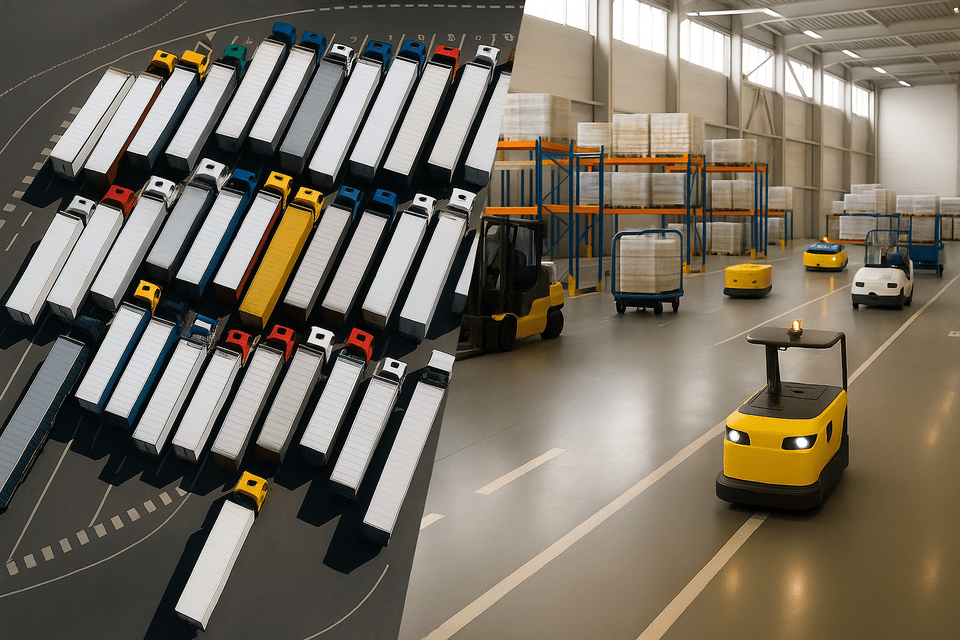Jun 10, 2025 Zdravka Ley
ShareWhat do you think of when you hear the term fleet management? The synonym for fleet management is firmly associated with the world of trucks, route planning and classic transportation logistics. When people talk about it, they usually mean the management of vehicle fleets in long-distance or distribution transport, including route planning, maintenance, fuel consumption and driver data. In recent years, however, intralogistics has discovered the term for itself and fundamentally redefined it. Automated Guided Vehicle (AGV) have given fleet management a new dimension. The term is growing with the technology and is becoming the key term for modern intralogistics solutions.
Fleet management between change and new requirements
The term fleet management was clearly defined for a long time. It referred to the management, planning, control and monitoring of traditional truck fleets. With the advent of digital tools, an important component of transport logistics emerged, almost exclusively for the road.
Today, this definition falls short. In intralogistics, especially in the context of AGV, the term is undergoing a reorientation in terms of content. In the world of intralogistics software, fleet management has long since established itself as a term for intelligent management solutions for automated guided vehicle systems. In addition, fleet management is the central orchestration of hybrid vehicle fleets, whether they consist of tugger trains, AGV or forklifts, for example.
This requires systems that can be seamlessly integrated into the existing IT landscape, can prioritize dynamic driving orders and provide real-time information for planning, control and monitoring at all times. Open standards such as VDA 5050 create the basis for manufacturer-independent communication between vehicles and management software. This transforms traditional fleet management into a networked and flexible management system for internal material flows.
Fleet Management with SYNCROTESS: Everything under control, from tugger trains to AGV
SYNCROTESS was developed in the early 1980s to optimize the internal managemetn of manned vehicle fleets, especially forklifts. Today, the system does much more: it takes over the central coordination of a wide range of transport vehicles, from tugger trains to forklifts and AGV, thus meeting the key requirements of modern fleet management in intralogistics.
Thanks to its modular architecture, SYNCROTESS can be flexibly adapted to specific requirements and seamlessly integrated into existing IT infrastructures, for example by connecting to ERP or warehouse management systems. At the same time, the platform is open for the integration of external fleet management systems via APIs or VDA-5050-compatible interfaces. This means that SYNCROTESS can be used both as an independent control instance and as a higher-level coordination platform for hybrid vehicle fleets.
Conclusion: Fleet management is more than just vehicle management
What used to be understood as fleet management has developed into a complex interplay of automation, real-time control and system integration in intralogistics. Modern plant logistics does not need isolated solutions, but intelligent management systems that grow flexibly and combine technologies.
SYNCROTESS not only controls fleets, but also orchestrates processes. It combines tried-and-tested systems such as the tugger train with new technologies such as AGV and offers the necessary openness for everything that is yet to come. If you want to exploit the full potential of modern intralogistics, you need a system that not only moves with you, but also thinks ahead and controls with foresight.
Where does your intralogistics stand today and how well prepared is it for the future?
About our Expert

Zdravka Ley
Marketing Manager
Zdravka Ley started working for INFORM in 2002 and is focused in topics around the optimization and sustainability of delivery and internal transport logistics.



